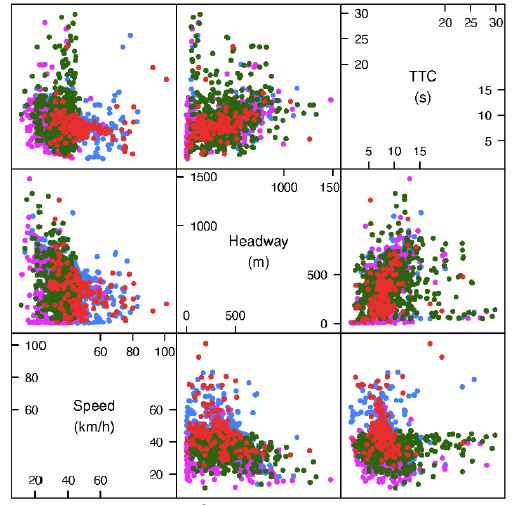
Driving simulator and naturalistic driving studies are often used to understand driving behavior characteristics. It is essential to evaluate the traffic safety of driving behavior in real time, which is helpful to trigger interventions of Advanced Driver Assistance Systems (ADAS) to ensure the driving safety. Therefore, this paper aims to propose a framework of driving behavior safety level classification and evaluation in real time, which was validated by a case study based on a driving simulation experiment. The proposed methodology focuses on finding the optimal number of safety “levels” or “zones” for driving behavior, classifying the safety levels with the help of different clustering techniques, and evaluating the driving safety levels based on developed classification models in real-time. Three clustering techniques were applied, including k-means clustering, hierarchical clustering and model-based clustering. The optimal number of clusters was found to be four using k-means), and the clusters of safety levels will be labelled as “normal” driving, “low risk” driving, “middle risk” driving and “high risk” driving. A Support Vector Machine (SVM) and a decision tree were thereafter developed as the classification model. The accuracy of the combination of model-based clusters and SVM models proved to be the best with four clusters, yet no significant difference to other models was found.
| ID | pc397 |
| Presentation | |
| Full Text | |
| Tags | driver behaviour, driving simulator, intelligent systems, machine learning, statistical modelling |













